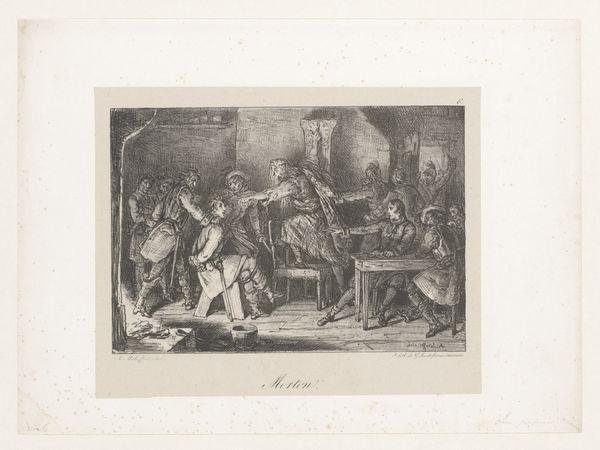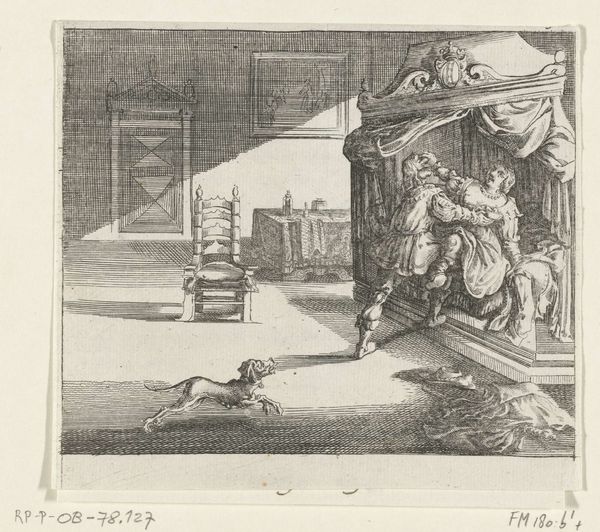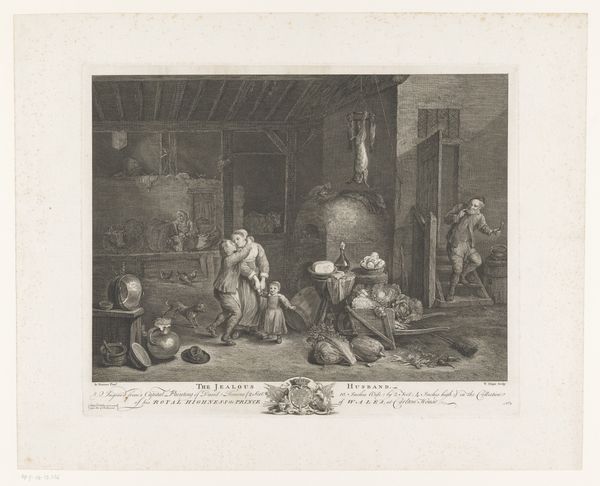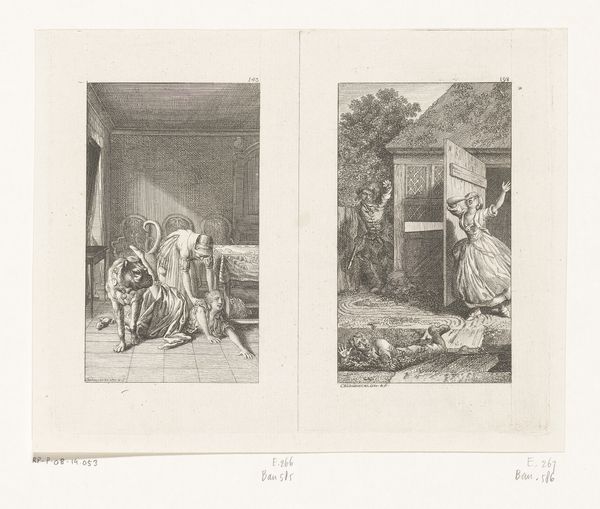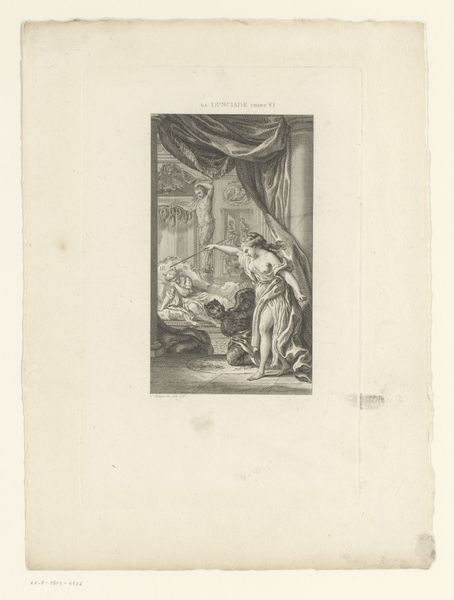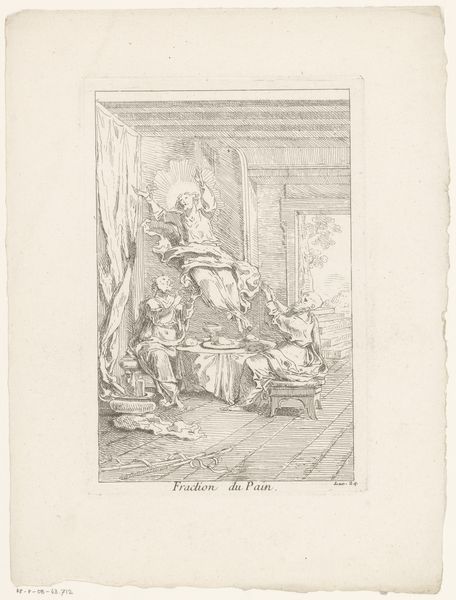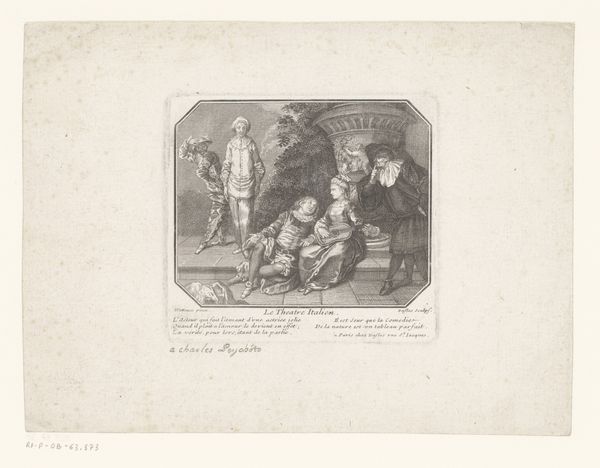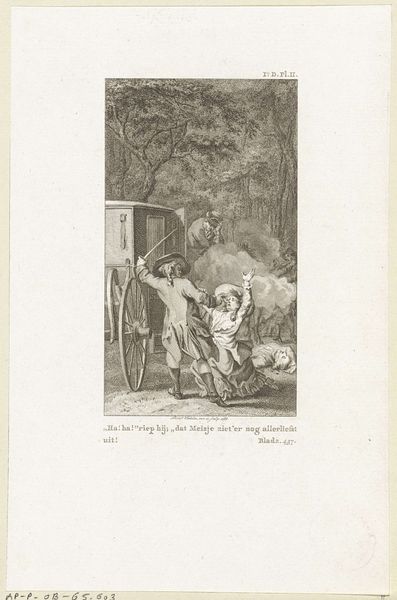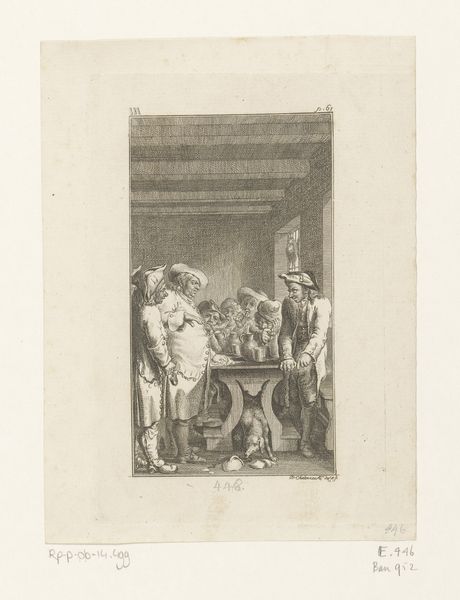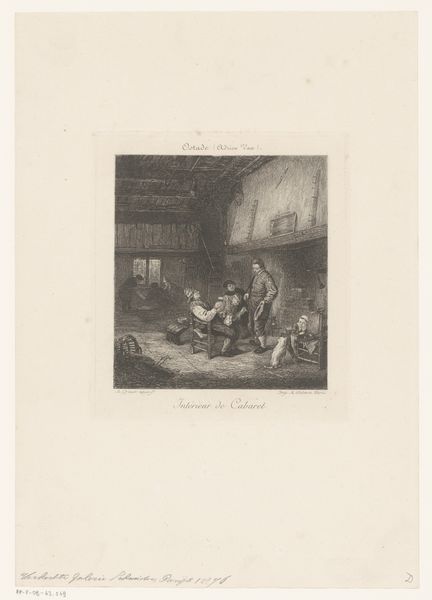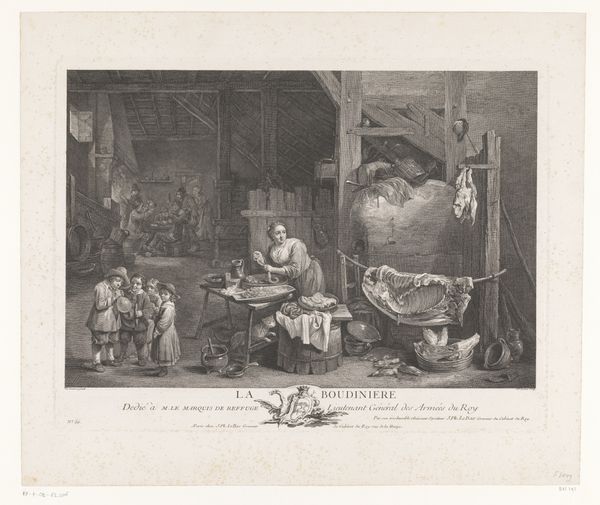
Dimensions: height 112 mm, width 146 mm
Copyright: Rijks Museum: Open Domain
Curator: Welcome to the Rijksmuseum. Today we’ll be looking at "Three Figures in a Kitchen in Livonia," an etching and engraving by Jean-Baptist Leprince, likely created between 1744 and 1781. Editor: My first impression is how the linear quality of the printmaking almost seems to trap the figures within the stone kitchen. It gives off a very claustrophobic atmosphere. Curator: Absolutely, and I think that confinement is central to understanding Leprince’s representation of rural life in Livonia. The image underscores the harsh conditions and social realities of the peasant class under aristocratic rule. The limited light, the crude implements, all speak to a lack of mobility and agency. Editor: You see poverty and oppression, I see an exercise in tonal variation. Look at the range Leprince achieves with simple lines! The gradations from the smoky darkness of the hearth to the relatively lighter figures near the entry… it’s masterfully rendered, regardless of its social commentary. The textural contrast, from the rough stone to the smooth skin of the figures, also deserves remark. Curator: But those formal qualities also communicate meaning! The darkness obscuring the background suggests not just smoke, but also the obscurity of their existence, and how the lives of the rural population were concealed from the eyes of the wealthy elite. The contrast emphasizes their socio-economic situation. Editor: I can see that. However, if you step back, the very visible network of lines adds a dynamism that mitigates the oppressive reading; in that light it seems rather more observational, descriptive. Curator: Perhaps Leprince's technique reveals something of his own position, observing rather than fully immersed in that lived experience, yet interested in making that world visible to others. Editor: A productive tension then, and elegantly visualized in the contrasting areas of dark and light and varying linear textures. Curator: Precisely. I’m glad we were able to draw so many insights out of this evocative depiction. Editor: Me too. Another example of why art demands that we bring our own interpretive tools to its observation.
Comments
No comments
Be the first to comment and join the conversation on the ultimate creative platform.
